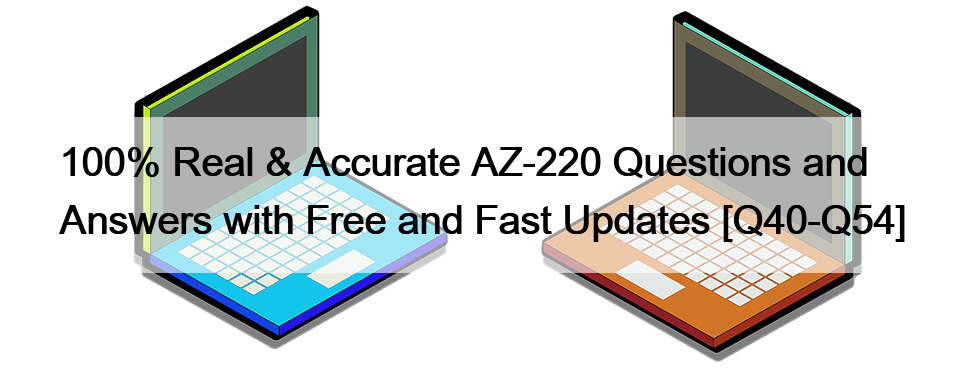100% Real & Accurate AZ-220 Questions and Answers with Free and Fast Updates
Get Unlimited Access to AZ-220 Certification Exam Cert Guide
How to Prepare for AZ-220?
The subject matter expertise that the Microsoft AZ-220 test demands can only be gained once the test-taker has access to quality and updated study resources. The vendor offers a wide range of options in this regard. In particular, aspirants can go for free and paid training with the vendor like:
- AZ-220T00-A: Microsoft Azure IoT Developer Instructor-Led Classes
For detailed learning, paid tutor-led training is always an ideal pick. For this AZ-220 exam, you have Course AZ-220T00-A: Microsoft Azure IoT Developer as a viable option. It is a 4-day long intermediate-level training course contrived to impart in applicants detailed cognizance of all the exam topics. Particularly, such a course fully covers the fundamentals of Azure IoT services, IoT Hub, Stream Analytics of Azure, and Azure IoT Central. In case you’re striving to become an audience for this training, you need to first showcase your experience with cloud solutions, the development of software, and data processing. Once you can do this, you’re free to attend the 11-module lessons that also contain labs to provide you with the hands-on skills necessary for your future job. When you complete the classes, you’ll have gained the most vital skills for your AZ-220 like working with provision devices using DPS, securing 2-way communication that concerns IoT Hub and devices, executing scenarios for IoT Edge, making use of SaaS IoT opportunities, and putting into operation the Azure Security Center for IoT.
- Free Online Self-Paced Courses
The options in the free training section are Azure IoT Introduction, Securely Connecting IoT Devices to the Cloud, Building the Intelligent Edge with Azure IoT Edge, and Developing IoT Solutions with Azure IoT Central. All of these four prep classes will arm you with the beginner to intermediate knowledge for Microsoft Azure, IoT, Event Grid, Blob Storage, etc. In all, during this training, you can study through 21 gratis modules that align with the exam objectives and teach you the necessary concepts for your test mastery. Once you’re interested to pass these courses, attend the vendor’s site and start your prep journey.
Asked Prerequisites
The Microsoft AZ-220 candidate should ensure that a considerable amount of work experience in implementing the Azure services must have been gained beforehand. Data storage options, ways to perform data processing, and data analysis concepts must be also clear for those targeting this test. Besides, it is important that the exam aspirant is capable to recognize the Azure IoT service configuration setting along with languages like C#, Node, C, and Python.
Exam AZ-220: Microsoft Azure IoT Developer
Candidates for this exam should have subject matter expertise implementing the configuration and coding tasks required to create and maintain the cloud and edge portions of an IoT solution.
Candidates for this exam should have a general understanding of device types and Azure services, including data storage options, data analysis, data processing, AI, and other platform as a service (PaaS) options. They must be able to program in at least one Azure IoT software development kit–supported (SDK–supported) language.
Part of the requirements for: Microsoft Certified: Azure IoT Developer Specialty
Reliable Study Materials for AZ-220 Exam Success For Sure: https://www.validbraindumps.com/AZ-220-exam-prep.html






